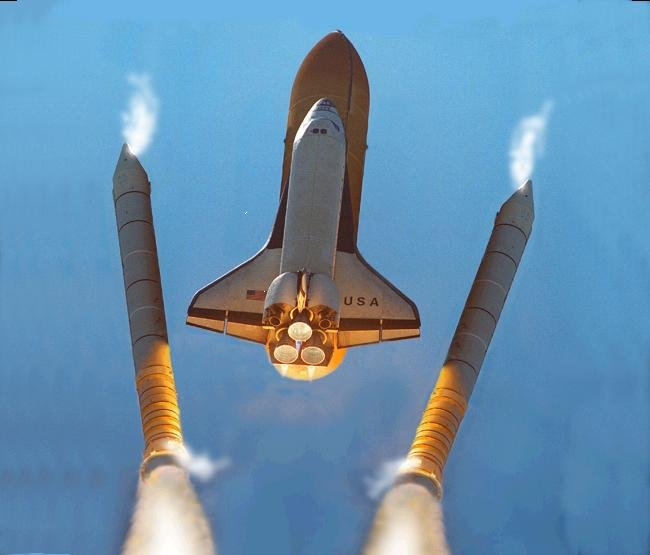

Space
The space a satellite impacts is greater that that of any other “thing;” the physical space they occupy is more spread out than that of any other “thing.” Satellites are located at a wide range of distances from Earth’s surface, from just outside the Earth’s atmosphere at 80 miles to 22,000 miles from it (geostationary orbits). The distance affects orbiting speed, and the relation of the physical space above the Earth a satellite inhabits is important, as satellites have to orbit faster near the equator to balance the stronger affects of gravity (the Earth is oblong and not spherical). The path a satellite travels relates to its function, as will be described in this section. Launching
Launching a satellite is an incredibly expensive and fuel intensive endeavor. There are typically between 30 and 40 launches a year, most done by commercial companies. Moreover, the lifespan on a satellite is typically only fifteen years before they have to be replaced. It’s also extremely wasteful as massive rocket boosters fall back to Earth, and later rocket staging gets launched into orbit contributing to the problem of space junk.
To escape the atmosphere, rockets travel at about 5 miles per second, and are typically launched close to the equator as the Earth’s rotation "sling-shots" rockets, requiring fewer boosters and less power to escape Earth’s gravitational pull.
Orbits
Check out Space Junk Big Images, and you might want to change you resolution.
LEO
Low-orbit satellites are used for satellite phone communications, military operations, and for observation. They complete an orbit in about 90 minutes because they are close to the Earth and gravity causes them to move very quickly at around 17,000 miles per hour. Many satellites need to be used for communication relay because the area they cover on Earth’s surface is small and they are moving so quickly. Space Junk is most common in this orbital range, and is most dangerous here for both its speed and density. For instance, “a 3-millimeter (mm) aluminum particle traveling at 10 km/s is equivalent in energy to a bowling ball traveling at 60 miles per hour (or 27 m/s)” (Anz-Meador).
MEO
Middle-orbit satellites are used for both weather and observation. They are between 6,000 and 12,000 miles, and have a fairly large coverage area on Earth’s surface. MEO satellites often have polar orbits so they can track weather or other changes as the Earth rotates. I Polar elliptical orbits are otherwise used for the reason that they only have to be in range at certain times, those times being when they pass over the north and south poles. Geostationary orbits generally cannot cover this area. The perigee, or closest point of orbit occurs at the poles, whereas the apogee (most distant point of orbit) occurs when the satellite isn’t needed to relay or collect information. This is largely an issue of efficiency wherein thrusters aren’t needed to maintain a circular orbit.
GEO
Geostationary orbits (GEO) are used for tv, and communication satellites. They reach the greatest Earth surface area. They are the most distant satellites, at 22,223 miles above Earth, a distant used so that that the rotational speed of the satellite matches the turn of the Earth. The aptly titled geosynchronous orbit is described in detail: “At an altitude of 124 miles (200 kilometers), the required orbital velocity is just over 17,000 mph (about 27,400 kph). To maintain an orbit that is 22,223 miles (35,786 km) above Earth, the satellite must orbit at a speed of about 7,000 mph (11,300 kph). That orbital speed and distance permits the satellite to make one revolution in 24 hours. Since Earth also rotates once in 24 hours, a satellite at 22,223 miles altitude stays in a fixed position relative to a point on Earth's surface. Because the satellite stays right over the same spot all the time, this kind of orbit is called "geostationary." Geostationary orbits are ideal for weather satellites and communications satellites.” http://science.howstuffworks.com/satellite3.htm Because of the distance of these satellites they have latency issues, and the information relay takes time, so voice operations do not use these satellites.

The Satellite main page
